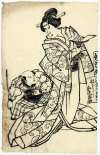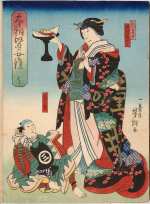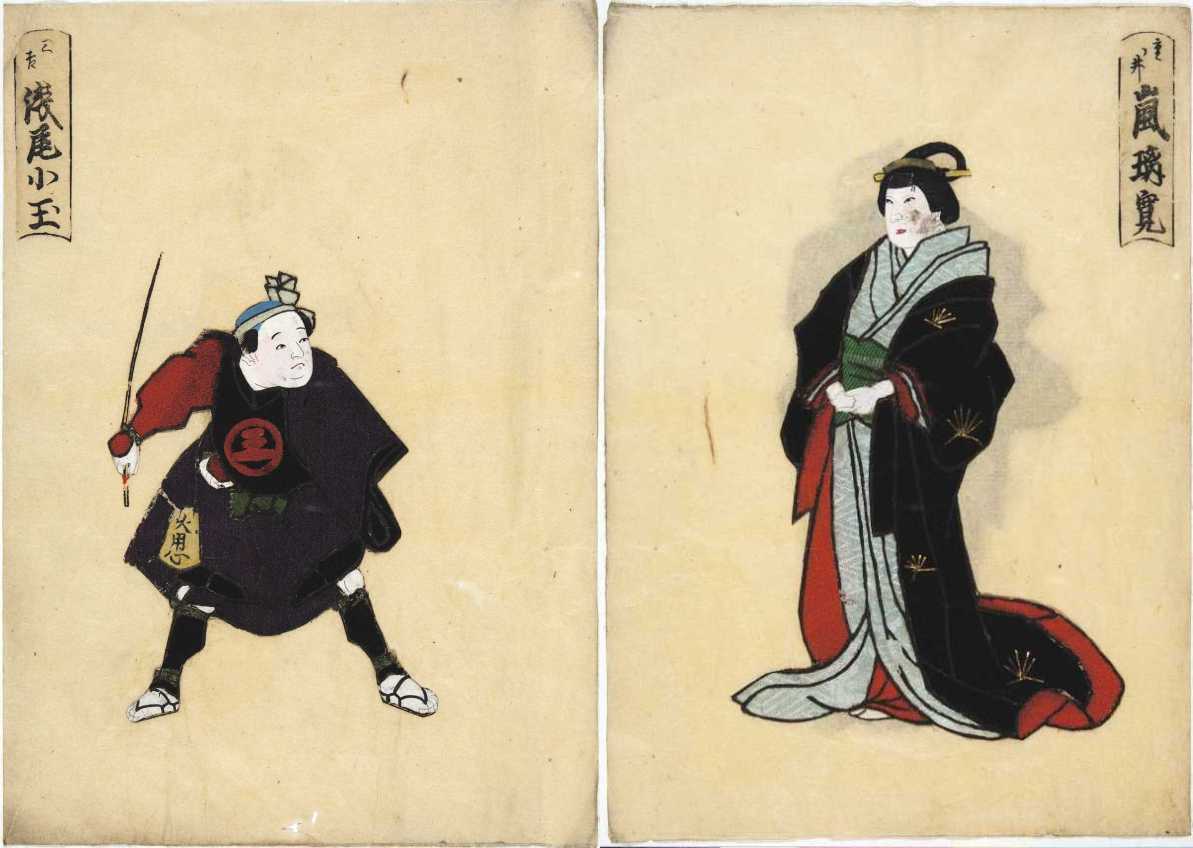G10 Nuri-e and Oshi-e
-
"Shigenoi: Arashi Rikan" "Miyoshi: Asao Kodama"
Artist: 無款 Koban, Oshi-e Diptych
Ritsumeikan Art Research Center(shiUY0162, 0163)
Coloring toy is still a very popular distraction for all ages in modern times. Also in Edo period, wood-print technique enabled to mass-publish and a line drawing in black ink seemed to be for coloring‐in. Art Research Center stores Ukiyo-e prints based on Yakusha-e (actors print) which were designed for coloring and published in Kyoto and Osaka. Those pictures were probably marketed as coloring toys or just cheap edition of Yakusha-e.
An there is another type of coloring toys, called "Oshi-e" (lit. pushing picture), which is enjoyed by coloring with small pieces of cloths without paints. This coloring technique with cloths enabled the picture to express plasticity, and the pictures sometimes were sold along with pieces of cloths.
The picture displayed here is Oshi-e which were carefully colored by suitable cloths for each parts. The plain state of picture is a sheet of ink printed picture like the picture in the left side. This ink print depicted a parent and child, Miyoshi and Shigenoi, in the same page. The subject is common in two pictures, a seen from "Koi nyobo somewake tazuna" called "Shigenoi wakare" (separation with Shigenoi).

A heiress of Yurugi family, Shirabehime, was decided to be adopted to Iruma family, but she hesitated to move unfamiliar land. A horse companion boy called "Jinenjyo no Sankichi" (lit. Sankichi of Japanese yam) came to her and showed a backgammon depicted a journey from Edo to Kyoto. Shirabehime felt better because of the favorable backgammon. A wet nurse of Shirabehime named Shigenoi came to the place to give some sweets for reward to Sankichi, and she realized he was her own child between "Date no Yosaku". However she forced herself to leave without saying anything to uphold her honor as a wet nurse of the princess in a lord lineage.
Children who played with Nuri-e and Oshi-e enjoyed those toys with listen to the stories about them from parents or other adults. The tragedy that a child could not know the woman in the front of him was his mother must have been understandable for the children at that time.

On the other hand, in color-prints, this scene is described like the picture in the left column. While both of them are wood-print and describing same scene, the constructions of the pictures are quite different. It can be said that the gap reflected the characteristics of them as a media. (,)【参考文献】
≪ 続きを隠す
『岩波講座 歌舞伎・文楽〈第4巻〉歌舞伎文化の諸相』(岩波書店)
『新版 歌舞伎辞典』(平凡社) -

- 投稿日:
- by 8P
- カテゴリ: G Amusement for Audiences
- [編集]